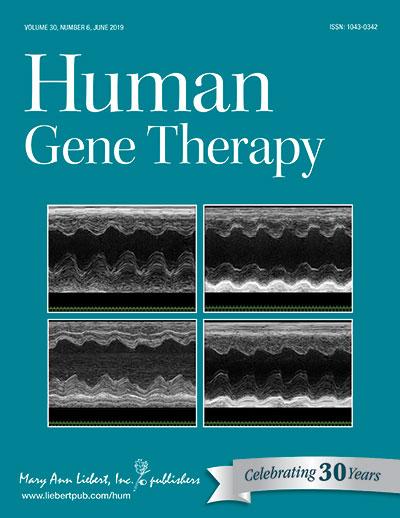
Credit: (c) 2019 Mary Ann Liebert, Inc., publishers
New Rochelle, NY, June 14, 2019–A therapeutic gene delivered into the spinal canal of infant rhesus monkeys was still being expressed after nearly 4 years, with no evidence of acute or chronic neuronal toxicity, according to a new study published in Human Gene Therapy, a peer-reviewed journal from Mary Ann Liebert, Inc., publishers. Click here to read the full-text article free on the Human Gene Therapy website through July 14, 2019.
The article entitled “Safe and Sustained Expression of Human Iduronidase After In-trathecal Administration of Adeno-Associated Virus Serotype 9 in Infant Rhesus Mon-keys” was coauthored by James M. Wilson, MD, PhD, University of Pennsylvania, Pe-relman School of Medicine (Philadelphia) and a team of researchers from the Universi-ty of Pennsylvania, University of West Indies (Kingston, Jamaica), and University of California, Davis School of Medicine and California National Primate Research Center.
Dr. Wilson’s group used intrathecal injection to deliver adeno-associated virus 9 (AAV9) vectors carrying the gene for the alpha-I-iduronidase (IDUA) enzyme. This en-zyme is deficient in mucopolysaccharidosis type I (MPS I), an inherited lysosomal stor-age disease also known as Hurler disease.
Based on the safety and long-term potency of AAV9-IDUA delivery via the cere-berospinal fluid demonstrated in this study in newborn monkeys, the authors conclude that the clinical development of this method of gene therapy should be pursued for ear-ly-onset severe forms of neuropathic storage diseases such as MPS I.
“The problem of physical delivery of AAV vectors to the appropriate cells remains a significant technical hurdle in gene therapy for disorders affecting the central nervous system,” says Editor-in-Chief Terence R. Flotte, MD, Celia and Isaac Haidak Professor of Medical Education and Dean, Provost, and Executive Deputy Chancellor, University of Massachusetts Medical School, Worcester, MA. “Studies like this one provide criti-cal information on the feasibility of delivery approaches that could directly translate to human infants suffering from these fatal diseases.”
Research reported in this publication was supported by the National Institutes of Health under Award Numbers HL085794 and OD011107. The content is solely the responsibility of the au-thors and does not necessarily represent the official views of the National Institutes of Health.
###
About the Journal
Human Gene Therapy, the Official Journal of the European Society of Gene and Cell Therapy, British Society for Gene and Cell Therapy, French Society of Cell and Gene Therapy, German Society of Gene Therapy, and five other gene therapy societies, is an authoritative peer-reviewed journal published monthly in print and online. Led by Editor-in-Chief Terence R. Flotte, MD, Celia and Isaac Haidak Professor of Medical Education and Dean, Provost, and Executive Deputy Chancellor, University of Massachusetts Medical School, Human Gene Therapy presents reports on the transfer and expression of genes in mammals, including humans. Related topics include improvements in vector development, delivery systems, and animal models, particularly in the areas of cancer, heart disease, viral disease, genetic disease, and neurological disease, as well as ethical, legal, and regulatory issues related to the gene transfer in humans. Its companion journals, Human Gene Therapy Methods, published bimonthly, focuses on the application of gene therapy to product testing and development, and Human Gene Therapy Clinical Development, published quarterly, features data relevant to the regulatory review and commercial development of cell and gene therapy products. Tables of contents for all three publications and a free sample issue may be viewed on the Human Gene Therapy website.
About the Publisher
Mary Ann Liebert, Inc., publishers is a privately held, fully integrated media company known for establishing authoritative peer-reviewed journals in many promising areas of science and biomedical research, including Nucleic Acid Therapeutics, Tissue Engineering, Stem Cells and Development, and Cellular Reprogramming. Its biotechnology trade magazine, GEN (Genetic Engineering & Biotechnology News), was the first in its field and is today the industry’s most widely read publication worldwide. A complete list of the firm’s 80 journals, books, and newsmagazines is available on the Mary Ann Liebert, Inc., publishers website.
Media Contact
Kathryn Ryan
[email protected]
Original Source
https:/
Related Journal Article
http://dx.



